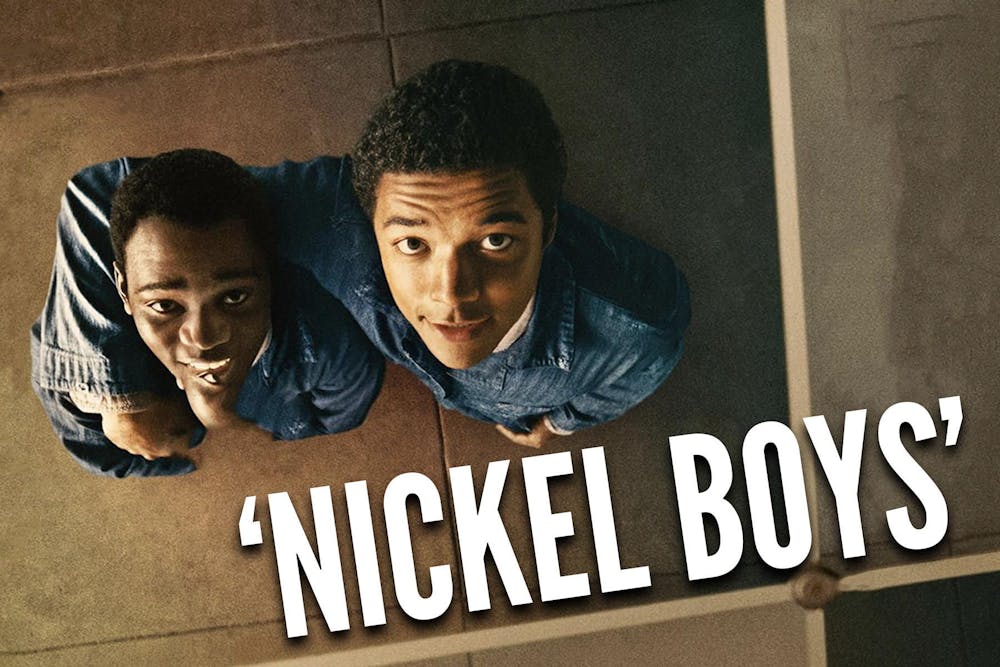The decision by the Oscars in 2009 to expand the amount of best picture nominees from five to 10 was seen by many as a cheap appeal to populism that would allow blockbusters to receive more nominations. However, it has also had the more virtuosic effect of foregrounding obscure art-house films that haven’t received much attention elsewhere. These are films that most people would never hear of or watch if they weren’t nominated for best picture, so regardless of how cynical you are about awards, the Oscars are an important way for smaller films to reach a larger audience. Amid this year’s best picture nominees — including a sci-fi blockbuster, an adaptation of one of Broadway’s most successful musicals and a Palme d’Or winner — there emerged such a film that had gone under many people’s radar: “Nickel Boys.”
“Nickel Boys,” the narrative debut of director RaMell Ross, is one of the most accomplished and transcendent films I’ve seen. The film’s power stems from its brilliant conceit; it is shot (almost) entirely in the first-person point-of-view. While this might initially seem like a gimmick, it is so much more than that. The groundbreaking formalism Ross extracts from this single decision is equally terrifying and awe-inspiring, putting “Nickel Boys” up there with films like “The Zone of Interest” that push the medium of cinema forward.
The film’s singular presentation is in service of its story about two Black teenagers, Elwood and Turner, who are sent to an abusive prison reform school in 1960s Florida. From the very beginning, we are enmeshed in Elwood’s life, seeing through his young eyes an America full of racial turmoil yet hope for a more just society. His teacher instills in him Black pride and optimism in the civil rights movement, much to the chagrin of Elwood’s grandmother, who is worried he’ll get hurt if he challenges white society. Her fears are eventually proven right when he gets arrested and sent to Nickel Academy, a reform school, after unknowingly hitchhiking in a stolen car on his way to an HBCU. Upon his arrival, he is immediately segregated into the dilapidated Black barracks, where he meets Spencer, who becomes his best friend.
The first-person POV heightens the potency and devastation of Elwood and Spencer’s time at Nickel. Audiences usually have the upper hand over characters in films; the camera gives us information and perspectives that they aren’t privy to. However, Ross’ formal decision makes the audience and characters’ perspectives one and the same; we don’t have any more control over or separation from the brutality of Nickel than Elwood and Spencer. We are forced to share their powerlessness, uncertainty and desolation. The dehumanization and abuse the two boys face at Nickel thus become incredibly visceral and intimate.
Ross’ use of the first-person POV is dynamic and meticulous. He captures so many little details and fleeting moments with his camera, whether it be a slight nod, a curious glance or a head hung in shame. There are moments of immense compassion, such as Elwood’s grandmother hugging Spencer, who has been deprived of love since he arrived at Nickel. And there are moments of severe dread, such as Elwood sitting in the White House, the remote shed where the supervisors beat students, as he awaits his turn while hearing the anguished screams of students. Ross’ depiction of their time at Nickel never feels exploitative or shallow; he is able to depict the loss of innocence and pervasive racism at the school with a thoughtful clarity that honors both the profound humanity of the students and the unfathomable pain inflicted upon them.
The film occasionally crosscuts between teenage Elwood’s time at Nickel and Adult Elwood’s current life in New York. Here, the first-person style is altered to an over-the-shoulder perspective as if the camera is floating right behind him. This subtle shift has a harrowing implication; the trauma of Elwood’s time at Nickel has caused him to dissociate from life. This stylistic choice reflects the content of these scenes; adult Elwood is reserved, impassive and struggles to connect with others. He is also obsessed with researching Nickel Academy and uncovering all its dark secrets. His time at Nickel has permanently ruptured his psyche, and he is now stuck in an existence that he doesn’t feel grounded in. In the film’s final sequence, the past and present catch up in a devastating twist that recontextualizes the entire film.
“Nickel Boys” absorbs and breaks you as few other films can. Its stunning, inventive formalism uncompromisingly depicts the horrors of the racism and prison system in our country. And yet, it always foregrounds the dignity of its characters, never losing sight of their resilience and hope. It’s a haunting achievement that should be getting way more attention, but I suppose our current conservative zeitgeist is no longer interested in stories like this. However, don’t let that make you miss out on this essential work of American cinema.










